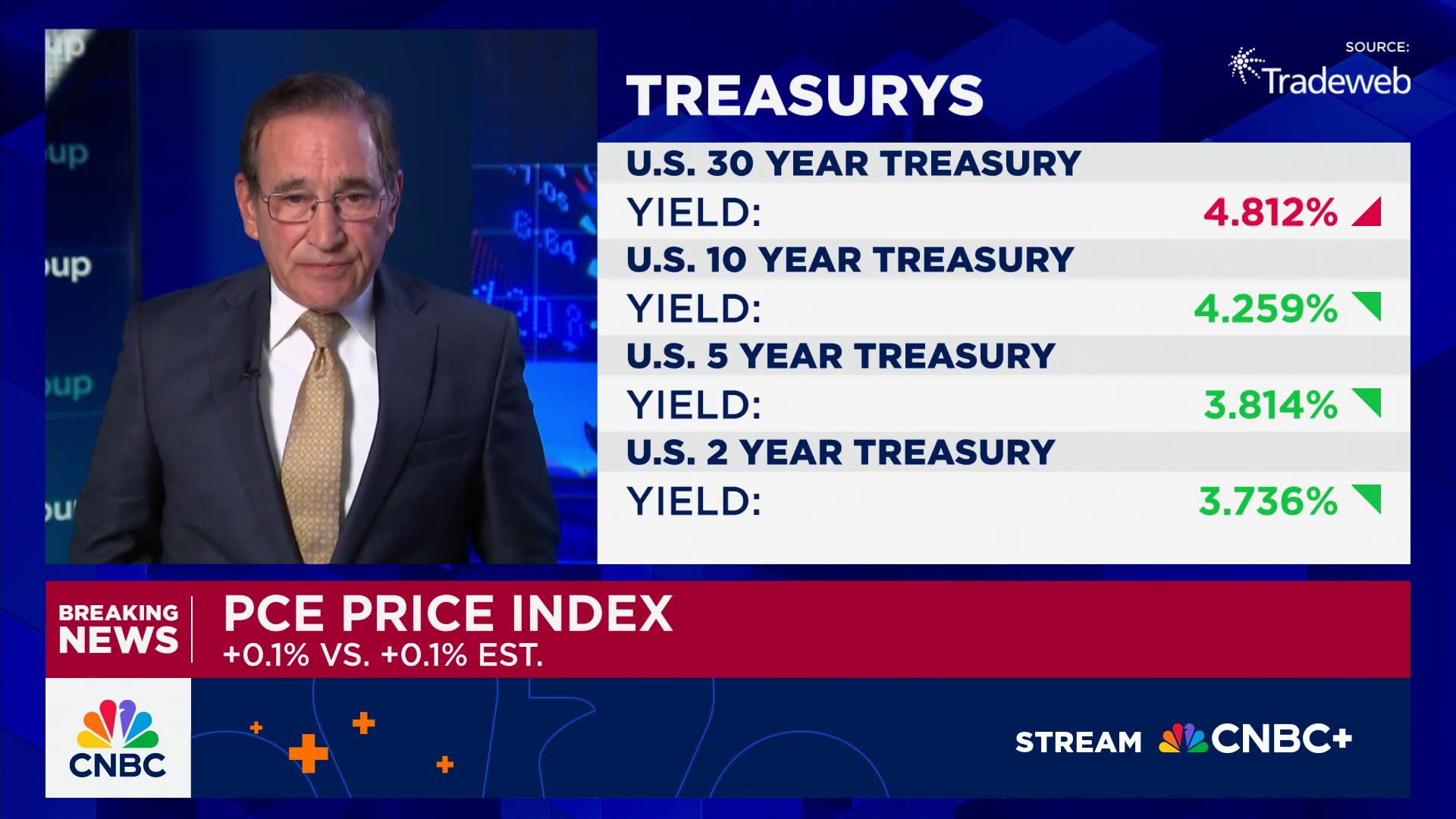New homes being built in Englewood Cliffs, N.J. on Sept. 24th, 2024.
Adam Jeffery | CNBC
From lumber to drywall to appliances to finishings, much of what goes into a U.S. home comes from outside American borders.
The cost of those products is about to go up, as President Donald Trump‘s administration imposes tariffs on China, Mexico and Canada. Goods from China are now subject to a 20% tax, an increase from a previous 10% tax, and those from Canada and Mexico face a 25% tax. Canadian lumber was already subject to separate duties of 14.5%.
The new tariffs could increase builder costs anywhere from $7,500 to $10,000 per home, said Rob Dietz, chief economist at the National Association of Home Builders, citing estimates from U.S. homebuilders. Last year the NAHB estimated that every $1,000 increase in the median price of a new home prices out roughly 106,000 potential buyers.
The greatest impact to homebuilders will be from lumber cost increases, which are expected to total about $4,900 per home on average, according to Leading Builders of America, the trade group representing most of the nation’s publicly traded homebuilders.
Roughly a third of the lumber used in U.S. homebuilding comes from Canada, and domestic lumber producers are expected to raise their prices to match the imported supply.
“Since Trump first imposed the tariffs on Feb. 1, which were then delayed, we’ve seen some increase in buying with prices for Western Spruce-Pine-Fir two-by-fours increasing 13%,” said Paul Jannke, principal at Forest Economic Advisors. “With the re-imposition of the 25% tariff on Canadian goods shipped to the U.S., we expect Canadian producers will stop shipping lumber to the U.S. Meanwhile, dealers, who have been hesitant to buy given uncertainty around the tariffs, will need to step up purchases ahead of the coming building season. This will drive prices higher.”
Lumber futures are up 5% in the past week and were rising steadily Tuesday.
Trump on Saturday issued an executive order to increase domestic lumber production through a streamlining of regulatory and permitting processes. The homebuilding industry took that as a win.
“A stable and affordable supply of lumber is critically important for our industry to address the country’s housing supply crisis,” wrote Ken Gear, CEO of the LBA, in a statement. “The domestic lumber industry cannot meet current demand, so we applaud President Trump for exploring opportunities to increase domestic supply as a long term solution.”
The NAHB, which represents small to mid-sized private builders, “welcomed” the move, but said in a statement, “Any additional tariffs on lumber could further increase the cost of construction and discourage new development, and consumers end up paying for the tariffs in the form of higher home prices.”
As for ramping up domestic production immediately, that’s easier said than done. Jannke estimates it would take up to three years to build multiple new mills. He explained that there are a limited number of companies that manufacture sawmill machinery and even fewer, perhaps one or two, that can build a mill top to bottom.
High demand during the first years of the Covid-19 pandemic, when homebuilders were going gangbusters, had lumber producers rushing to expand.
“However, so many folks wanted to build [or] expand mills, that the lead times from equipment manufacturers moved out to two years,” Jannke said. “On top of that, once a mill was built, labor had to be found to operate the mill. These mills are in rural areas that tend not to have the skilled labor force needed to operate a modern sawmill. This added another year before the mill was operating at full capacity.”
The labor force, from logging to hauling, is already lean and decreasing. Opening up new land and deregulating the industry is one thing, but finding the workers to bring U.S. lumber to market is another.
“In the short term it is going to be very volatile from a pricing perspective,” said Kyle Little, chief operating officer at Melville, New York-based Sherwood Lumber. As for increasing production, “that won’t be a flip of a switch. You’re taking a 40-year supply chain and trying to switch overnight – that’s hard.”
Homebuying landscape
Beyond lumber, the homebuilding industry is subject to rising costs across the sector.
China is the market leader in household appliances. And, the majority of drywall, or gypsum, used in both commercial and residential construction is imported from other countries. In 2023, the U.S. imported $215 million in gypsum, becoming the largest importer of the product in the world, according to OEC World, a trade data platform. It primarily comes from Spain, Mexico and Canada.
“Rising costs due to tariffs on imports will leave builders with few options. They can choose to pass higher costs along to consumers, which will mean higher home prices, or try to use less of these materials, which will mean smaller homes,” said Danielle Hale, chief economist at Realtor.com.
Hale noted that while new construction will see the biggest impact, tariffs will change the landscape of the housing market overall, including existing homes.
“We may see buyers’ willingness to pay rise for existing homes as newly built homes get pricier, which would mean rising prices for existing homes, too. We may also see a lower appetite for major remodeling projects that would rely on these tariff affected inputs, hamstringing the ability of consumers to remake their homes to fit their current needs,” she added.
While costs for home construction will certainly rise, the Trump administration is touting lower mortgage interest rates in the past few weeks. The average rate on the 30-year fixed hit its most recent high of 7.26% on Jan. 13, according to Mortgage News Daily. It is now down to about 6.64%.
“I think thus far, one of the biggest wins for the American people is since Election Day, and since Inauguration, mortgage rates have come down dramatically,” said Treasury Secretary Scott Bessent in an interview Tuesday on Fox News.
Bessent noted the spread between the 10-year Treasury and mortgage rates narrowed, though that spread has in fact widened significantly since Trump took office.
The tariffs come at a time when the U.S. housing market is already under pressure. Signed contracts on existing homes dropped to the lowest level on record in January, according to the National Association of Realtors. Sales of newly built homes fell 10% in January, compared with December, according to the U.S. Census. And prices are still stubbornly high, with the inventory of homes for sale still historically low.









